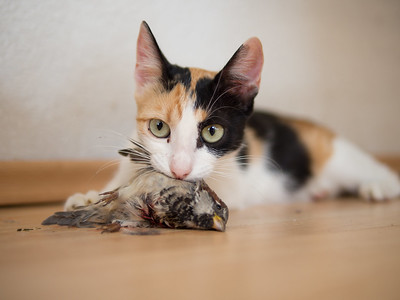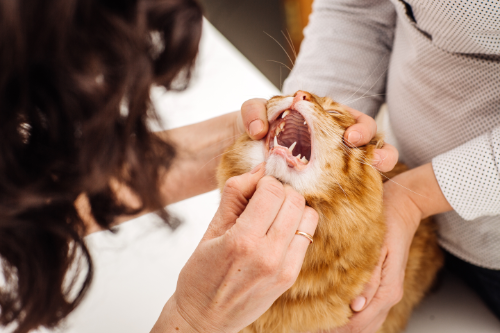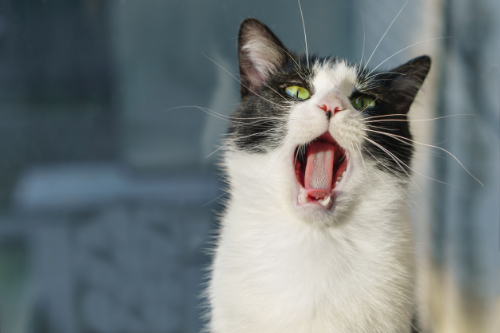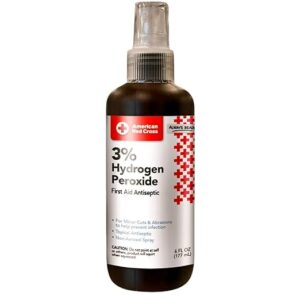What are bleeding gums?
If you see that your cat’s gums are bleeding, there is damage to the gums and especially to the blood vessels in the gums. The blood seeps from the blood vessels into the oral cavity. In this article we discuss the causes of bleeding gums in cats and also what you can do about it yourself.
Causes of bleeding gums
gingivitis
When the gums are very inflamed, the tissue is very vulnerable. We also call this gingivitis. The gums then bleed quickly at the slightest touch. Causes of gingivitis include tartar or juvenile gingivitis in young cats. On the page about gingivitis you can read a more detailed story about this problem and what you can do about it yourself.
Gum injuries
When a cat has fought with another cat, or when it has been in a collision with some vehicle, it can have injuries all over its body. And therefore also injuries in his mouth. But we mainly see this when they have caught a rodent and it wanted to attack your cat in its agony to get loose. The injuries are then mainly in his mouth region, so you will see bleeding gums in your cat.
In some cases, the bleeding gums are the result of a broken jaw caused by a collision. So also check that the teeth are all still neatly lined up, are not loose and no crazy jump is visible between the teeth. You should also look especially in the lower jaw to see if you can move the jaw half left and right in relation to each other. In cats, the lower jaw usually breaks exactly in the middle at the front. Read on to learn how to examine your cat’s mouth.
Blood clotting problems
When a cat has problems with its blood clotting, bleeding can also occur without a clear cause. This is especially easy to see in the mouth because there are no hairs there. Cats don’t often naturally have a disease that affects blood clotting. They do, however, often eat rats and mice that have been poisoned with rat poison. This can cause the cats to have problems with their blood clotting and you can see bleeding gums in your cat. Usually you will also see small red spots on the gums, tongue and belly of your cat when this problem occurs.
Blood from a prey
Very often an owner thinks that his cat suffers from bleeding gums. But very often it is just appearances. For example, your cat may have just caught a bird and enjoyed eating it. If he hasn’t cleaned his mouth nicely by then, you can still see some blood residue on it. It goes without saying that you don’t have to treat your cat. But check if he has not hidden the injured or dead animal for you as a gift somewhere.

How do you examine your cat's mouth yourself?
First of all, you have to make sure that you are calm yourself. Do you panic yourself and then try to examine your cat’s mouth? There is a good chance that he will not show you the cause of the bleeding gums. Bleeding gums are almost never a life-threatening situation.
Are you calm? Then you can try looking at your cat’s mouth. To do this, lift his lips at the front. Don’t see anything? Then pull his lips back slightly to view his molars and gums in that area. You do this on both sides. Then you can hold his jaw with one hand over his nose behind his fangs and then pull his lower jaw down with your other hand. It helps if you tilt his head slightly backwards. Then he usually loosens his lower jaw a bit. Don’t open his lower jaw too far because then he will struggle and you won’t see anything.
Hopefully now you can see where the blood is coming from. At the same time, check whether you also see a lot of tartar on the teeth in that area and whether the gums look inflamed. In that case it is much redder than the normal pink gums. If it looks pretty neat with just one nick then it was probably an accident.

How do you treat your cat's bleeding gums yourself?
Did you find the cause? Nice. When it comes to tartar, you can read what you can do about it on the page about tartar. If it seems to be a simple wound, you can ensure that it does not become infected. Is it already infected? Then you can apply the same treatment. Your cat will then heal the wound itself, as long as you as the owner ensure that the infection is prevented.
To prevent or dissolve wound infections in your cat’s mouth, you can use hydrogen peroxide 3% solution. You put this liquid on a cotton swab. You then dab a fresh cotton swab with hydrogen peroxide on the wound three times a day. Do this for 5 days. A fresh wound has already healed after 5 days. A wound that was heavily infected can sometimes require a longer treatment. But after 10 days at the latest it should be cured and much sooner you should see that the inflammation is improving.
When should you see your vet?
This is especially necessary if your cat seems to be in a lot of pain. “Normal” bleeding gums are not very painful. So if it bothers him a lot, there is probably something else going on. In any case, your own vet can give you a painkiller for your cat after a thorough examination.
Do you think there may be a blood clotting problem? Then it is necessary to immediately visit a veterinarian. So even if it is already night or if it is the weekend. When internal bleeding occurs in your cat, it can bleed to death within a few hours. Don’t wait until the next working day if you think a blood clotting problem is the cause of your cat’s bleeding gums.
If you have treated your cat’s bleeding gums with hydrogen peroxide, it should also heal quickly. If that is not the case, additional treatment is also required, such as a course of antibiotics. So if it doesn’t heal quickly enough, even then you should take your cat and his bleeding gums to your vet. But hopefully that is not necessary. Good luck for your cat!


